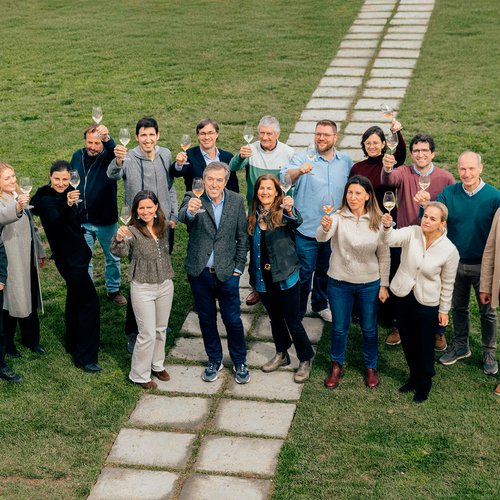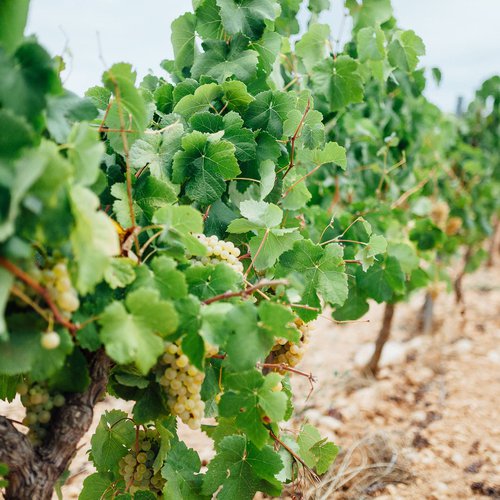Exploring the Parajes Calificados of Cava and its Singularity
For many years, the Regulatory Council has been committed to highlighting the work of wineries with a long tradition and products of exceptional quality. As a logical progression within this commitment, the category of Cavas de Paraje Calificado was introduced, within the Cavas de Guarda Superior, with the aim of giving them even greater recognition and appreciation. The creation of this category in 2015 represented a tribute to the uniqueness and excellence of exceptional vineyards, as well as to the production and elaboration of a closed circle of high quality.
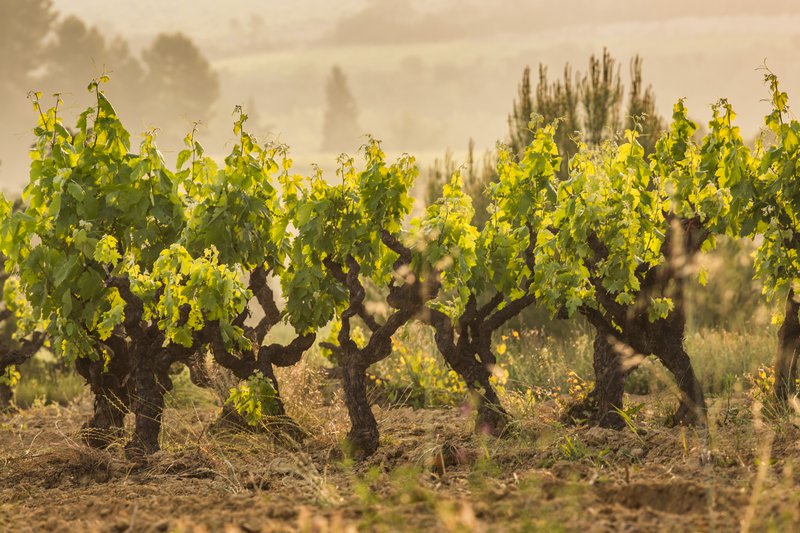
This initiative seeks to highlight the excellence and uniqueness of these top-of-the-range Cavas, which stand out for their careful production and singular characteristics, the result of the particular environment in which they are produced. With strict criteria for cultivation and vinification, these Cavas represent the best of the tradition and art of Cava production.
The magic and importance of the traditional method are fundamental, but the uniqueness of Cava also comes from a combination of factors that goes deeper than that. From the geology of the soil to the skill and experience of the winemakers, each aspect contributes to the creation of the final product.
Characteristics of the Paraje Calificado
The Parajes Calificados are exceptional areas that stand out for the uniqueness of their terroir. These viticultural sites have been carefully selected and qualified due to their unique characteristics and the environment that surrounds them.
Only a few plots have obtained this qualification. To qualify, strict requirements must be met, such as vineyards over 10 years old, a maximum yield limited to 8,000 kg per hectare, and manual harvesting.
They must be single-vineyard Cavas vinified on the property, with controlled extraction yields limited to 48Hl per hectare and a minimum ageing period of 36 months.
The control mark is the guarantee of quality certified by the D.O. Cava, which distinguishes the Cava de Guarda Superior de Paraje Calificado from other sparkling wines. These wines are an example of the excellence and care of the winemakers in search of perfection in each glass and guarantee full traceability for the consumer, from the vineyard to marketing.
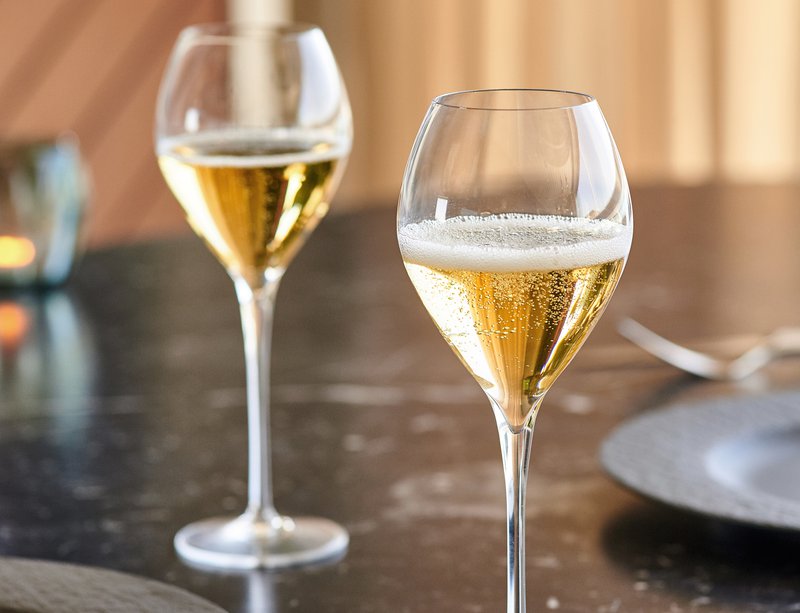
The terroir
When we study a wine region, we find elements that are both visible and invisible, but equally essential. Terroir encompasses multiple aspects, including physical, chemical and biological, which influence the personality of Cava.
The concept of terroir takes on special relevance with Cava, as its distinctive character is forged from the synergy between soil, climate and the human factor. The identity of each Paraje Calificado is shaped by unique soil characteristics that influence the grapes grown.
Geomorphology
Each Paraje Calificado exhibits a particular geomorphology, which refers to the general description of the aspect of the terrain and the typology of the relief that makes up the landscape surrounding the vineyards. Some Parajes have terraces close to the sea, while others may have sloping hillsides or undulating areas.
Geological setting
The geological origin of the soils is a fundamental factor in the conformation of the Parajes Calificados. The alluvial deposits and sediments from different geological eras have given rise to unique and distinctive soils that directly influence the character and quality of the Cava produced in these plots.
Edaphology and soils
The soil study reveals the physical and chemical properties of the soil surrounding the vines in each site. The texture of the soil, its depth and drainage, as well as its organic matter and nutrient content, play an essential role in the development of the vines and in the production of quality grapes for making Cava.
Soil aspects
The physical aspects of the soil, such as texture, depth and thermal properties, together with the chemical aspects, including acidity and mineral composition, and the biological aspects, for example nitrate concentration, are essential for the quality and uniqueness of each Paraje Calificado.
Climate
Climate also plays a determining role in the definition of the Parajes Calificados. The combination of climatic factors, such as temperature, humidity and sun exposure, influences the vegetative cycle of the vines and the ripening of the grapes, bringing nuances and complexity to the resulting wines.
Biodiversity
The Parajes Calificados are places where biodiversity is appreciated and preserved. The richness of the flora and fauna in the wine-growing environment contributes to the sustainability and ecological balance of these unique sites.
Minerality
Minerality is another of the aspects that is considered to define Cavas with a Paraje Calificado origin. Although it is not an edaphic concept in itself, it can be observed that certain elements or special characteristics present in the soil can lend distinctive organoleptic characteristics to the Cava.
The interaction between the mineral components of the soil and the roots of the vines can give rise to subtle and complex flavours and aromas, which contribute to the complexity and balance of the resulting Cava.
Vineyards
Each Paraje Calificado is made up of carefully selected vineyards, which have been planted and cultivated in harmony with the surrounding natural environment. The choice of suitable grape varieties, the sustainable management of the vineyards, and their 100% organic character are essential to obtain superior quality grapes.
Selection and identification of vineyards
The selection and identification of the vineyards that form part of each Paraje Calificado Cava is a meticulous and rigorous process. Each plot must meet the quality and uniqueness criteria established to obtain the Paraje Calificado qualification. The wineries interested in registering a site of these characteristics have to present detailed dossiers that support the suitability of their vineyards to form part of this exclusive group.
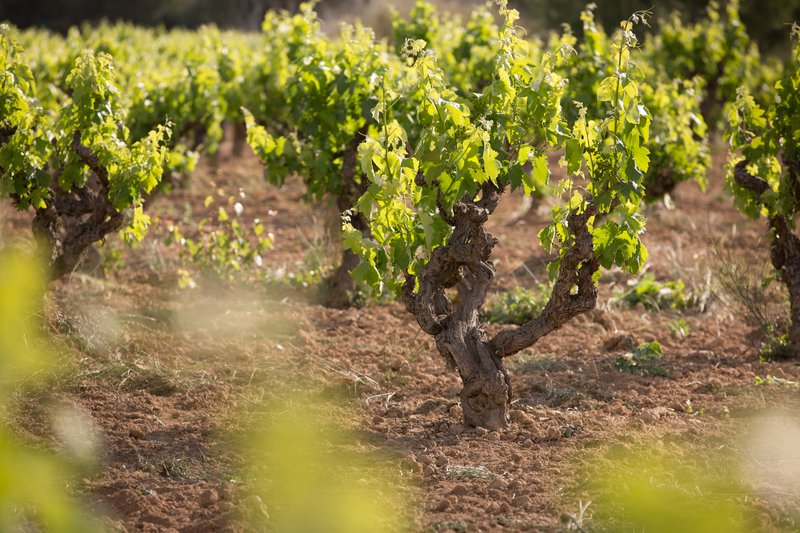
Parajes Calificados of the D.O. Cava
At present, there are eight Parajes Calificados, six winemaking cellars and ten Cavas with the Guarda Superior de Paraje Calificado label on the market.
Alta Alella, Paraje Calificado Vallcirera
Located in the municipality of Alella in the Comtats de Barcelona area, specifically in the Serra de Mar subzone, is the Paraje Calificado of the Pujol-Busquets family. Organic since its beginning, this site is characterised by its sloping hillsides and terraces close to the sea, located between 100 and 250 metres above sea level. Its Palaeozoic origin has given rise to soils with a sandy-loam texture, the result of the decomposition of granite, known in the area as sauló. These soils are moderately deep and very well drained, which results in their low fertility due to permeability and low water retention capacity. The grape varieties grown are Chardonnay and Pansa Blanca (Xarel-lo), and they have a distinctive acidity, typical of soils of granite or sauló origin, giving unique and differentiated characteristics to the resulting Cavas.
Juvé & Camps, Paraje Calificado La Capella
La Capella is a vineyard of 0.7 hectares of Xarel-lo of more than 40 years old, planted in goblet. Located in the area of Comtats de Barcelona, specifically in the subzone of Valls d'Anoia-Foix at 200 meters altitude, facing south, southwest.
The soils, of Quaternary origin, have a sandy loam texture with few coarse elements. They are deep and moderately fertile soils, with low organic matter and presence of carbonates and high levels of salts that give rise to grapes full of character, nerve and freshness, ideal candidates to create a Cava Brut Nature capable of growing and gaining in complexity with the long aging of more than 100 months.
Pere Ventura, Paraje Calificado Can Bas
Old vineyards planted with Xarel-lo and Macabeo varieties in a mosaic of five plots located in Comtats de Barcelona, in the subzone of Valls d'Anoia-Foix. The soils are of Quaternary origin and have a loamy texture. They are moderately deep and have low fertility, with little organic matter and a high presence of carbonates.
Raventós Codorníu, Paraje Calificado La Fideuera
This special vineyard of the Xarel-lo variety is located in a fan-shaped alluvial deposit, wedged between torrents and with a maritime influence. Located in the Comtats de Barcelona area, in the subzone of Valls d'Anoia-Foix. Its origin dates back to the Pleistocene era, arising from sediments from nearby formations. The soils have a loamy-argillaceous texture, with fragments of calcium carbonate scattered in them. They are of moderate depth and medium fertility, with an average organic matter content and an accumulation of carbonates.
This terroir plays a fundamental role in the absorption of nutrients by the vines’ roots, which lends a distinctive character to the grapes grown in this area.
Raventós Codorníu, Paraje Calificado La Pleta
Located in the Comtats de Barcelona area, specifically in the Pla de Ponent subzone, La Pleta stands out for its location on a flat plot on the slopes of the Turó de la Cerdera, facing southwest. This Paraje Calificado is ideal for growing Chardonnay and Pinot Noir grapes. The soils are of Quaternary origin, with a loamy-argillaceous texture and the presence of rounded gravels. The soils are deep, structured and well-drained, with medium fertility and good availability of micronutrients. Their salinity influences the balanced availability of nutrients for the vines and can manifest itself as an organoleptic attribute.
Raventós Codorníu, Paraje Calificado El Tros Nou
Located in the Comtats de Barcelona, specifically in the Serra de Prades subzone, this area is colder and rainier, with smooth, rounded contours. The soils of the Paraje are of Tertiary origin, with a sandy-loamy texture and the presence of coarse elements such as slate or quartzite. These deep soils have low fertility due to the low organic matter content. This is a Pinot Noir vineyard with the presence of slate, known in the area as licorella, which influences the mineral character and the development of the plant, lending a special character to the Cava produced.
Vins El Cep, Paraje Calificado Can Prats
Located in the Comtats de Barcelona area, and specifically in the Valls d'Anoia-Foix subzone, this Paraje Calificado has a slightly undulating terrain with gentle slopes crossed by ravines and torrents. Old vineyards of the Xarel-lo, Macabeo and Parellada varieties are planted in deep, well-drained soils of Quaternary origin with a loamy texture. Although they have moderate fertility, these soils have good water retention capacity and a high carbonate content. They were among the first vineyards in the D.O. Cava to use biodynamic viticulture.
Vins Família Ferrer, Paraje Calificado Can Sala
The special Parellada and Xarel-lo vineyards that make up Paraje Can Sala are located in the municipality of Sant Quintí de Mediona, in the Comtats de Barcelona area and the Valls d'Anoia-Foix subzone. They are located in a terrain made up of alluvial fans of Quaternary origin. The soils have a loamy texture, formed by conglomerates with an uncemented clay base. The soils are deep and of medium fertility, with a high water and nutrient retention capacity. The soils have a high calcium carbonate and iron content.
To find out about the variety of Cavas available at the moment, which are the result of each one of these Paraje Calificado Cavas, please see the complete list.
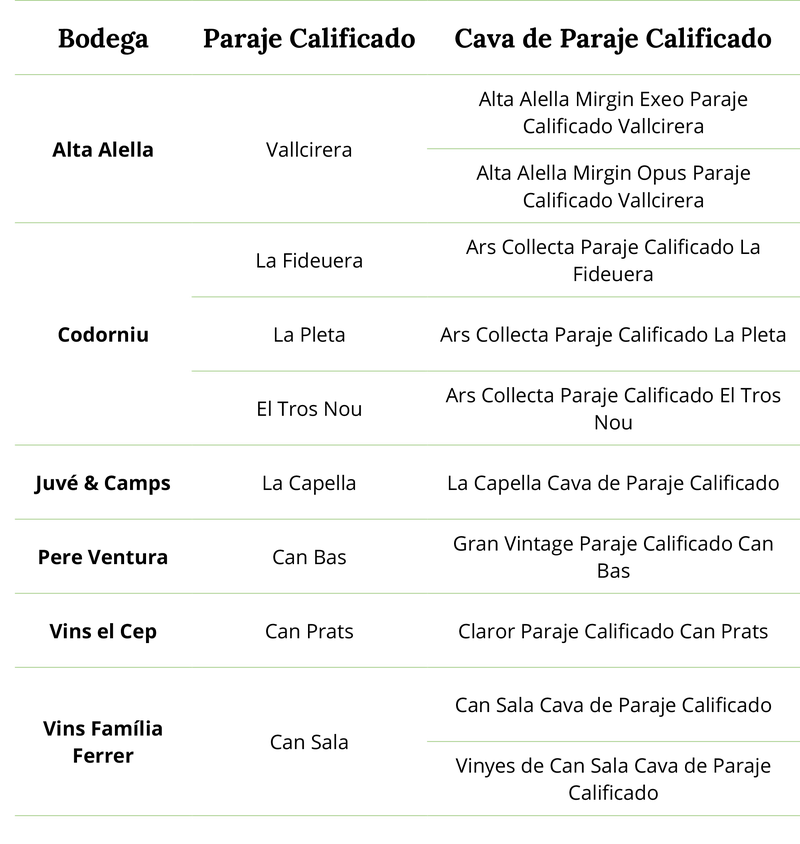
The complexity and versatility of the Cavas de Guarda Superior de Paraje Calificado
The Cavas de Guarda Superior de Paraje Calificado are a sublime display of complexity and balance, showing desirable harmony and a rich palette of nuances. Each Cava, unique in its essence, stands out for its distinctive character and versatility, making these wines the perfect accompaniment to a wide variety of flavours and dishes from around the world.
Captivating notes of ripe fruit, baked apples, dried apricots, candied fruits, nuts, coffee and spices offer a delicious experience. The mouthfeel is elegant and creamy with delicate, fine bubbles.
A molecular study carried out by François Chartier has shown that these Cavas are the ideal pairing for spicy dishes, such as in Indian or Asian cuisines, as well as for modern and creative culinary proposals. Learn more about the many pairing possibilities in this video by François Chartier and sommelier David Seijas.
Excellence is synonymous with quality
Each of these wineries and their respective Parajes Calificados contribute their unique soil and environmental characteristics to the creation of exceptional sparkling wines in the world of Cava. These wines reflect the identity and distinctive character of each Paraje. Dedication to quality and harmony with nature make these Cavas true jewels in the world of wine.

